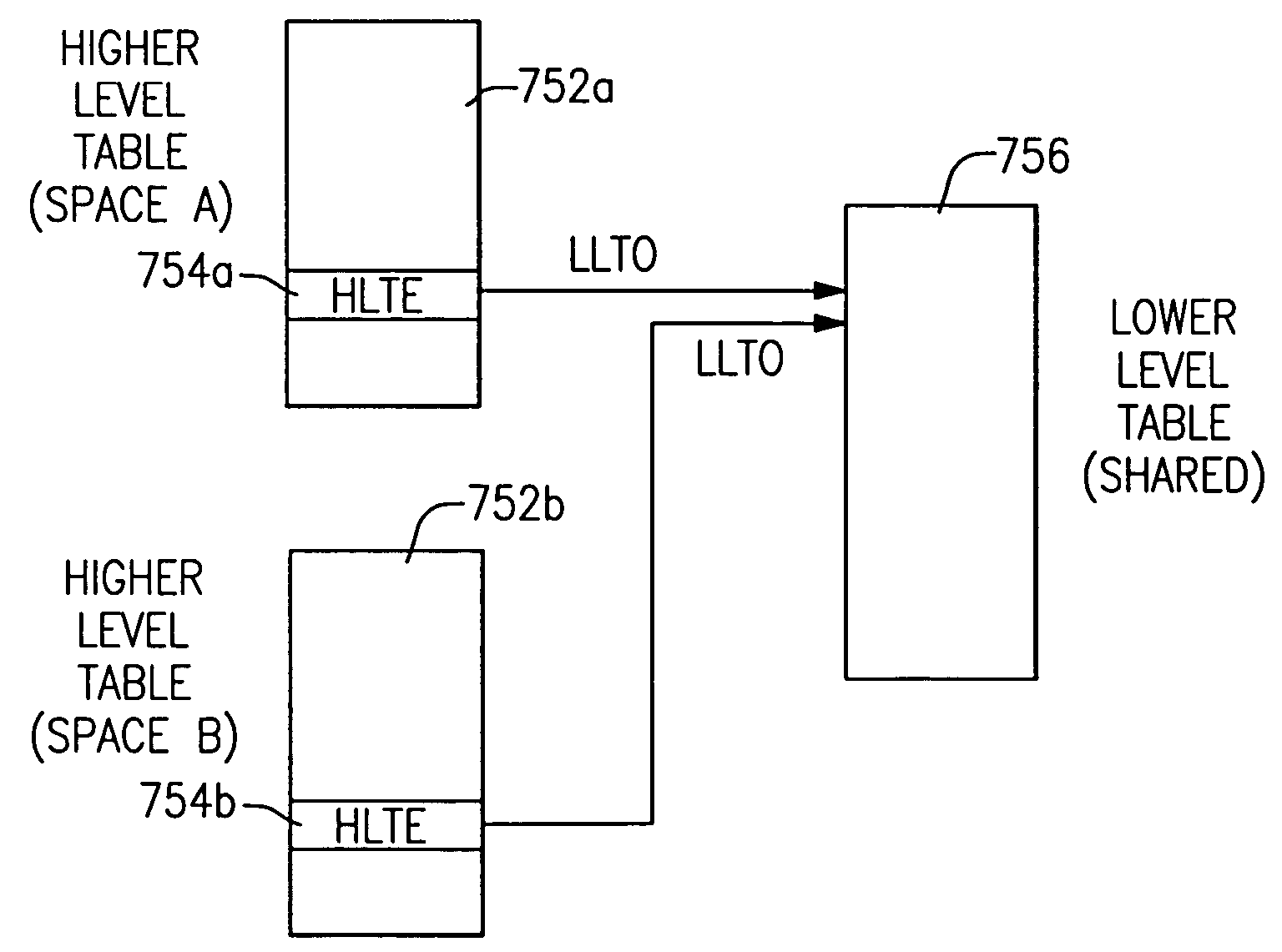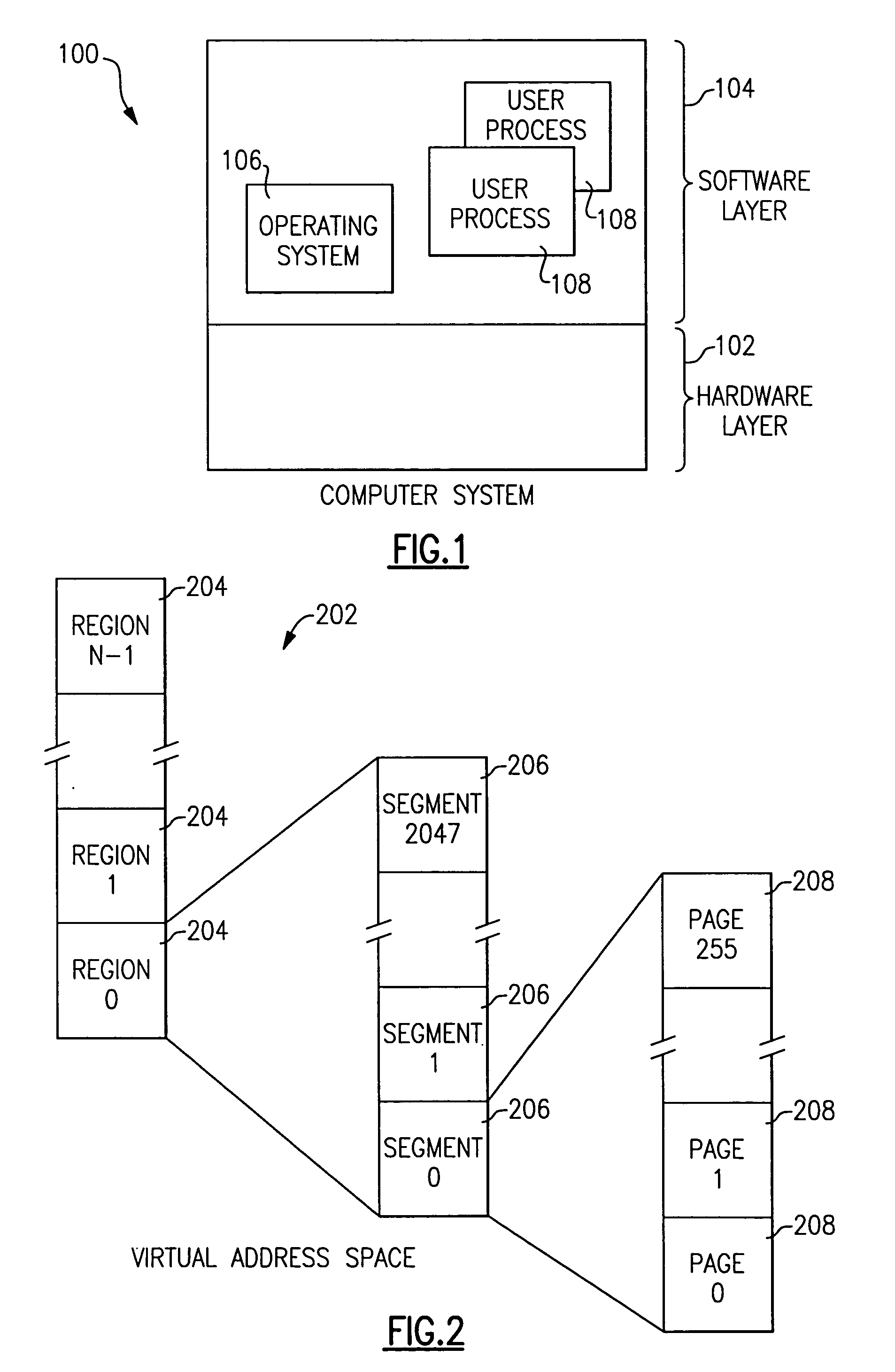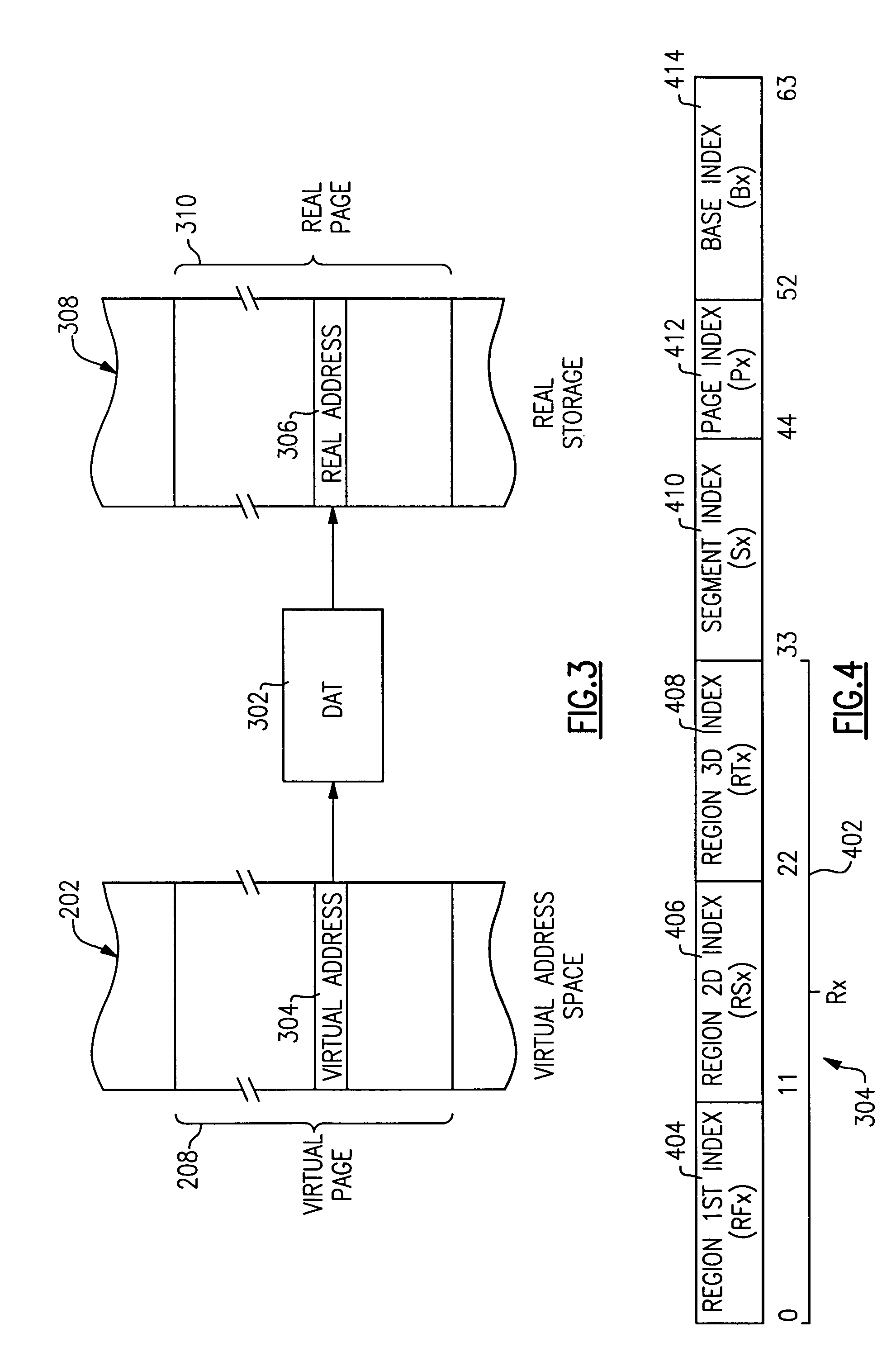Method and apparatus for managing shared virtual storage in an information handling system
a technology of information handling system and shared virtual storage, applied in the field of shared virtual storage management, can solve the problems of limiting techniques to address ranges below 2 gb, consuming 8 mb of pre-allocated virtual space, undesirable overhead, etc., and achieves the effect of avoiding the overhead associated with use, avoiding the overhead of overhead, and facilitating tracking
- Summary
- Abstract
- Description
- Claims
- Application Information
AI Technical Summary
Benefits of technology
Problems solved by technology
Method used
Image
Examples
Embodiment Construction
Introduction
[0047]FIG. 1 shows a computer system 100 incorporating the present invention. Computer system 100 may comprise either a separate physical machine or a separate logical partition of such a physical machine. Computer system 100 comprises a hardware layer 102 and a software layer 104. Hardware layer 102 contains the hardware elements of the system 100, including one or more central processing units (CPUs), dynamic address translation tables, main storage, remote storage (e.g., disk drives) and the like. These hardware elements operate in a conventional manner in the present invention and are therefore not separately shown in FIG. 1. While the present invention is not limited to any particular hardware platform, in a preferred embodiment the hardware layer 102 comprises an IBM zSeries™ server having the 64-bit architecture specified in the previously referenced IBM publication z / Architecture Principles of Operation, SA22-7832-01 (October 2001).
[0048]Software layer 104 contai...
PUM
 Login to View More
Login to View More Abstract
Description
Claims
Application Information
 Login to View More
Login to View More - R&D
- Intellectual Property
- Life Sciences
- Materials
- Tech Scout
- Unparalleled Data Quality
- Higher Quality Content
- 60% Fewer Hallucinations
Browse by: Latest US Patents, China's latest patents, Technical Efficacy Thesaurus, Application Domain, Technology Topic, Popular Technical Reports.
© 2025 PatSnap. All rights reserved.Legal|Privacy policy|Modern Slavery Act Transparency Statement|Sitemap|About US| Contact US: help@patsnap.com



